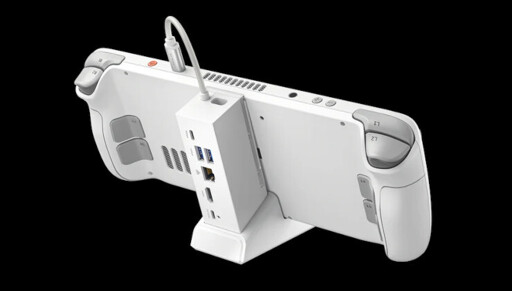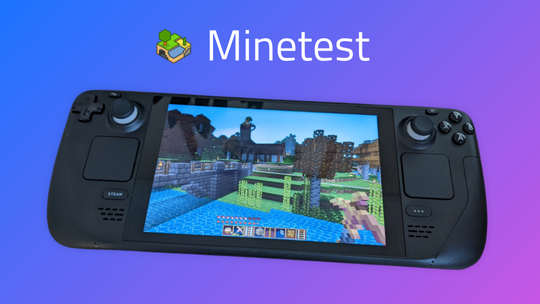- 2 Posts
- 570 Comments

 19·7 months ago
19·7 months agoBosch has a lot of goodwill. Interesting how they decide to spend it. Also Consumer Reports needs to start considering Internet connectivity, because the risks from Internet connected dishwashers are real and scary.
Yeah. And, in fairness, as a non-pirate, I read along here for tips and tricks to get a non-shit streaming experience out of my home hosted hardware.
If I could still pay for a non-shit streaming experience, I would just do that.
Yeah. I’m sympathetic to the whole “technology is hard” thing, and the idea that the SteamDeck is primarily meant to be for mobile gaming.
But switching from Nintendo Switch to SteamDeck really highlighted to me how good the Nintendo engineering team is, that I never had any of these display issues with a docked Switch.
Yeah. It’s really that bad. They’ve been releasing quality of life patches, but Valve made a portable device that happens to support docking, not a device meant to be docked.
Based on your experience, I assume you have the official Steam Dock, which I find worse to use with the SteamDeck than any random USB C dongle that I have tried.
Edit: Be sure to check for updates. I recall some of the issues you mention (like the blank screen) were mentioned in SteamOS release notes this year.

 11·7 months ago
11·7 months agoresearch papers that require a strong background in mathematics and cryptography to understand and implement.
Lol. I guess that makes sense. Outside of school, we hope that all authentication will be implemented only cryptography experts anyway.
Could you maybe suggest some resources on this topic?
Not really, sorry. I’m not aware of anyone creating resources for your situation.
Or should I choose a simpler project?
For some context, cryptography isn’t even usually implemented “completely correctly” by experts. That’s part of why we have constant software security patches.
If I were in your shoes, I guess it would depend on my instructor and advisors.
If I felt like they have the skills to catch mistakes and no time to help correct mistakes, then I would just choose a simpler project. If they’re cool with awarding a good grade for a functional demo, I might just go for it.
I guess I would take this one to an advisor and get some feedback on practicality.

 6·8 months ago
6·8 months agoI mean, you’re allowed to test it before it and iterate goes to review, though.
And reviewers can be allowed to merge stuff that’s “good enough”, and the iterate.

 2·8 months ago
2·8 months agois there a way to move commit out of the way Todo later?
This is what
cherry-pickdoes for me. Now that the work is all done, I cancherry-pickthe commits into the new branch in any order I find convenient (and often in an order that causes fewergitconflicts, or nogitconflicts to resolve.)Note that this approach is much stronger if the original commits are fairly focused and purposeful.
In extreme cases, I stop and rebase the new or old branch to clean up the commits before I
cherry-pickthem onto the same branch.In essence, all of these techniques are just ways for me to very slowly and methodically organize thoughts, using
git.Also, sometimes it’s all too messy and I just copy and paste all the change I need into a fresh clean branch.

 12·8 months ago
12·8 months agoAll swearwords, all the time. Generally puns on the servers purpose.

 14·8 months ago
14·8 months agoWhatever you do, familiarize yourself with
git reflog. It contains all the commits, regardless of your current branch state. Even ones you might think you lost. (For about two weeks until it cleans itself up.)In your shoes, I usually abort the rebase and start a new branch and
cherry-pickthe commits I need.It takes awhile, but it’s reliable.
Source: In my overconfidence, I screw up my local git state pretty often.

 1·8 months ago
1·8 months agoThe first party Steam Dock tries to do too much, and is unreliable. It frequently doesn’t correctly activate the monitor and deactivate the local screen. Other plain old USB C docks work fine.
Also, the official Steam Dock is also not compatible with most Steam Deck cases, both at the base and at the USB C port.
It’s weirdly bad for twice the price as any other option.

 3·8 months ago
3·8 months agoWhy is OpenGL considered an API?
An API is a promise - make these calls, get these kinds of results. An API often has more than one library that implements it. At minimum, there may be completely different code for different operating systems. At best, there may be completely separate vendors that implement identical APIs (Kubertnetes, and the Open Container Initiative, for examples).
Why is it necessary to use other libraries like GLAD, freeGLUT or GLFW to interface with OpenGL?
I don’t know.
where you install these packages that get used like libraries? What’s the difference?
Almost all packages are composed of libraries. Plenty of libraries lack packages. Packaging and delivering software is an entire field of study. As an expert at packaging and delivering software, I sometimes forget that a library I love still lacks a decent package. So I do my best to contribute a package, when I see a need.

 4·8 months ago
4·8 months agoYeah. It’ll be a huge time saver. I understand they think they can have it having whole technology holy wars with itself soon, while the rest of us relax.

 2·8 months ago
2·8 months agoLuanti, of course!
I need to figure out just one more way to make a compact item sorter, then I’ll be satisfied. (Narrator: They were not.)

 9·8 months ago
9·8 months agoThat would save a lot of time…

 10·8 months ago
10·8 months agoI don’t follow either closely enough to make a rank list or anything.
In the same ballpark as some moments that Torvalds has apologized for. Milder than Torvald’s worst, but also unrepentant, as far as I’ve seen.

 20·8 months ago
20·8 months agoits lead dev is a bit socially awkward
Heh. You’re being gentle, and that’s good. But that’s maybe understating it a bit.
I’ve seen the GrapheneOS official Mastodon account being an antisocial uncollegial mess.
It’s okay to acknowledge that we wish some of our open source contributors were better community members.

 151·8 months ago
151·8 months agoThe first step towards being great at anything is being shitty at that thing.

 13·9 months ago
13·9 months agoDeep down, aren’t we all…Charles?



When unsure of what the Captcha is trying to learn from me, I find “Kill all humans.” is a pretty good guess what the Captcha is really after.